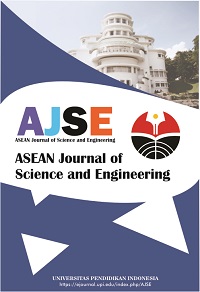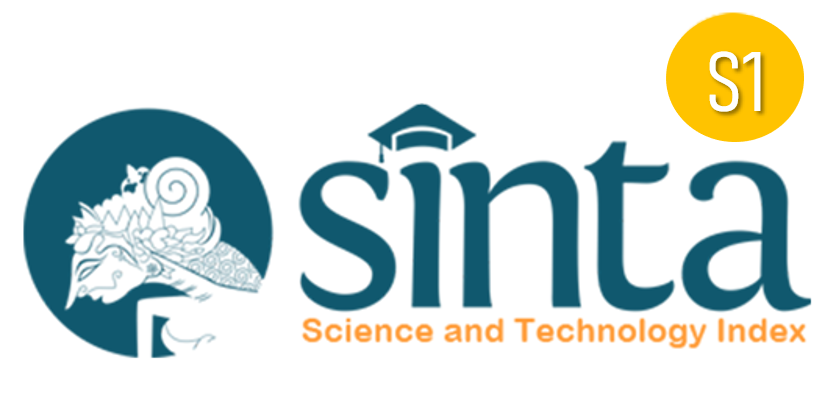How to Improve Hydroponic Leafy Vegetable Plant Productivity by Balancing Nutrient Solution, Total Dissolved Solids (TDS), and pH Completed with Literature Review on Standard Vegetable pH & TDS Requirement to Support Sustainable Development Goals (SDGs)
Abstract
This study explores how to improve the productivity of hydroponic leafy vegetables by balancing Total Dissolved Solids (TDS) and nutrient solution pH. Using bok choy in a floating raft system, the research applies a controlled experimental design to observe how these parameters interact in supporting vegetative growth and yield. Daily monitoring and careful adjustment of nutrient levels and pH are emphasized to ensure optimal nutrient uptake. Balanced TDS and pH conditions enhanced leaf formation and biomass accumulation, while imbalances caused nutrient stress and growth inhibition. This study offers practical guidance for growers to synchronize TDS and pH in real-time for improved nutrient management. The findings contribute to precision hydroponics aligned with sustainable agriculture, specifically supporting sustainable development goals (SDGs) for SDG 2 (Zero Hunger) through efficient food production and SDG 12 (Responsible Consumption and Production) by encouraging optimal use of agricultural inputs.
Keywords
Full Text:
PDFReferences
Miftah, H., Alfiah, A., Kusumawati, R., Mubarokah, S. L., Pramartaa, I. Q., Susanti, A. R., and Aidah, Y. (2024). Marketing strategic for hydroponic vegetable product to improve marketing performance base on digital technology. International Journal of Research and Applied Technology (INJURATECH), 4(1), 193–202.
Alviana, S., Nugraha, R. D., and Kurniawan, B. (2024). Plant nutrition monitoring system for water spinach based on Internet of Things. International Journal of Informatics, Information System and Computer Engineering (INJIISCOM), 5(2), 146–151.
Catigday, C. J. A., Sace, C., Pascual, C., and Malamug, V. (2023). Relationships of water quality parameters for hydroponic production of kale (Brassica oleracea) with in-ground passive cooling system. CLSU International Journal of Science and Technology, 7(2), 63–73.
Cho, Y. Y., and Son, J. E. (2005). Effects of planting density on growth and yield of hydroponically-grown Pak-Choi (Brassica campestris ssp. chinensis). Journal of the Korean Society for Horticultural Science, 46(5), 291–294.
Lind, O. P., Hultberg, M., and Bergstrand, K. J. (2020). Biogas digestate in vegetable hydroponic production: pH dynamics and pH management by controlled nitrification. Waste and Biomass Valorization, 12(1), 123–133.
Ban, B., Ryu, D., and Lee, M. (2022). Machine learning approach to remove ion interference effect in agricultural nutrient solutions. Journal of Environmental Control, 17(5), 24–37.
Huu, D. L., Nhat, H. N. T., and Ngo, X. Q. (2024). Effect of total dissolved solids and pH on the growth and yield of spinach (Spinacia oleracea L.) in the aeroponic system. Academia Journal of Biology, 46(4), 23–34.
Raj, A., Gupta, A., Gupta, N., and Bhagyawant, S. S. (2023). Effect of water TDS on the growth of plant (Phaseolus vulgaris). International Journal of Plant and Soil Science, 35(12), 131–136.
Barrow, N. J., and Hartemink, A. E. (2023). The effects of pH on nutrient availability depend on both soils and plants. Plant and Soil, 487(1–2), 21–37.
Singh, H., Dunn, B., and Payton, M. (2019). Hydroponic pH modifiers affect plant growth and nutrient content in leafy greens. Journal of Horticultural Research, 27(1), 31–36.
Karoba, F., and Nurjasmi, R. (2015). Pengaruh perbedaan pH terhadap pertumbuhan dan hasil tanaman Kailan (Brassica oleraceae) sistem hidroponik NFT (Nutrient Film Technique). Jurnal Ilmiah Respati, 6(2), 529–534.
Khan, S., Purohit, A., and Vadsaria, N. (2020). Hydroponics: Current and future state of the art in farming. Journal of Plant Nutrition, 44(10), 1515–1538.
Rochman, S., Rustaman, N., Ramalis, T. R., Amri, K., Zukmadini, A. Y., Ismail, I., and Putra, A. H. (2024). How bibliometric analysis using VOSviewer based on artificial intelligence data (using ResearchRabbit data): Explore research trends in hydrology content. ASEAN Journal of Science and Engineering, 4(2), 251–294.
Al Husaeni, D. F., and Nandiyanto, A. B. D. (2022). Bibliometric using VOSviewer with publish or perish (using Google Scholar data): From step-by-step processing for users to the practical examples in the analysis of digital learning articles in pre and post COVID-19 pandemic. ASEAN Journal of Science and Engineering, 2(1), 19–46.
Al Husaeni, D. N., and Al Husaeni, D. F. (2022). How to calculate bibliometric using VOSviewer with Publish or Perish (using Scopus data): Science education keywords. Indonesian Journal of Educational Research and Technology, 2(3), 247–274.
Putri, R. E., Fauzia, W., and Cherie, D. (2023). Monitoring and control system development on IoT-based aeroponic growth of Pakcoy (Brassica rapa L.). Jurnal Keteknikan Pertanian, 11(2), 222–239.
Islam, R., Faysal, S. M., Amin, R., Juliana, F. M., Islam, M. J., Alam, J., and Asaduzzaman, M. (2017). Assessment of pH and total dissolved substances (TDS) in the commercially available bottled drinking water. IOSR Journal of Nursing and Health Science, 6(5), 35–40.
Hindersah, R., Maulana, N., Damayani, M., Setiawati, M. R., Suryatmana, P., Fitriatin, B. N., and Setiawan, A. (2023). Effect of biofertilizer with reduced dose of nutrient solution on yield of Pak Choy on Nutrient Film Technique system. Soilrens, 21(2), 50–56.
Putra, R. D., and Sakti, A. W. (2022). Student development: Implementation of water rocket media as a project-based learning tool to improve the literacy of junior high school students during the pandemic. ASEAN Journal for Science Education, 1(1), 1-8.
San Jose, M. T. N. (2022). Factors that affect the performance of selected high school students from the third district of Albay in International Mathematics Competitions. ASEAN Journal for Science Education, 1(1), 9-16.
Ekunola, G. T., Babalola, E. O., Omolafe, E. V., and Ibrahim, A. T. (2022). Undergraduate students’ awareness to adopt gamification for learning in University of Ilorin, Nigeria. ASEAN Journal for Science Education, 1(1), 17-22.
Nafsi, N. R. R., and Maryanti, R. (2022). Analysis of teacher skills in e-learning content development during distance learning during the covid-19 pandemic. ASEAN Journal for Science Education, 1(1), 23-32.
Jadhav, P., Gaikwad, H., and Patil, K. S. (2022). Teaching and learning with technology: Effectiveness of ICT integration in schools. ASEAN Journal for Science Education, 1(1), 33-40.
Abulude, F. O., Acha, S., Gbotoso, O. A., Arifalo, K. M., Ademilua, S. O., Bello, L. J., and Aladesaye, C. (2022). Environmental education: A tertiary institution’s indoor air quality assessment in Nigeria. ASEAN Journal for Science Education, 1(1), 41-48.
Shahroni, N., Minghat, A. D., and Mustakim, S. S. B. (2022). Methodology for investigating competency index of technical vocational education and training (TVET) instructors for 4.0 industrial revolution. ASEAN Journal for Science Education, 1(1), 49-62.
Octaviani, H., Sakti, A. W., and Bilad, M. R. (2022). Improving activities and learning outcomes of elementary school students through experimental methods using lime as an alternative electrical energy source during the covid-19 pandemic. ASEAN Journal for Science Education, 1(2), 63-74.
Arciosa, R. M., Perfecio, J., and Cerado, E. C. (2022). Community extension: Literacy and numeracy enhancement program for alternative learning system and out-of-school youth learners. ASEAN Journal for Science Education, 1(2), 75-80.
Dermawan, R., Muktiarni, M., and Mupita, J. (2022). Efforts to increase the interest of junior high school students in mathematics lessons using the tik tok learning tool. ASEAN Journal for Science Education, 1(2), 81-88.
Minghat, A. D., Mustakim, S. S. B., and Shahroni, N. (2022). Literature review: Technical and vocational education and training (TVET) in Malaysia. ASEAN Journal for Science Education, 1(2), 89-102.
Ibrahim, M. M. M., and Nandiyanto, A. B. D. (2022). Education on the importance of food consumed by breastfeeding mothers and exclusive breastfeeding against stunting prevention through power point media. ASEAN Journal for Science Education, 1(2), 103-112.
binti Shabudin, N. A., bin Zamanhuri, M. A., and Rosli, A. H. (2022). 3D simulation of muscular system in anatomy learning. ASEAN Journal for Science Education, 1(2), 113-116.
Ala, N. A., Onojah, A. O., Ishyaku, A. M., and Adamu, S. B. (2022). Development of an animation package in biology for teaching vertebrate, anatomy, and physiology. ASEAN Journal for Science Education, 1(2), 117-130.
Pangestu, T. I., and Sakti, A. W. (2022). Learning color theory in elementary school using basic infographic media during the Covid-19 Pandemic. ASEAN Journal for Science Education, 2(1), 1-6.
Abd Wahab, N., Mahmood, N. H. N., and Minghat, A. D. (2022). Science education research methodology: A case study investigating the correlation between construction, safety, accident, and the effectiveness construction industry development board (CIDB) green card training program. ASEAN Journal for Science Education, 2(1), 7-16.
Zahra, P. R., and Nandiyanto, A. B. D. (2023). Learning of Objects, Elements, Compounds, and Mixtures in Daily Life’s Elementary School Students. ASEAN Journal for Science Education, 2(1), 17-22.
Barke, H. D. (2023). Broensted acids and bases: History, misconception, and application today. ASEAN Journal for Science Education, 2(1), 23-32.
Lagcao, Y. G. D., Dechavez, J. P. A. D., Goleng, D. J. G., Lamzon, A. K. E., Tangkli, K. Y. M., and Vicera, W. J. C. (2023). Math readiness and its Effect on the online academic performance of science, technology, engineering, and mathematics students. ASEAN Journal for Science Education, 2(1), 33-38.
Idris, A. M., and Arah, A. S. (2023). Barriers and measures for enhancing the conduct of transformative research among industrial and technology education lecturers and postgraduate students in university. ASEAN Journal for Science Education, 2(1), 39-46.
Swafiyah, B., Muhammad, B. A., and Yamusa, A. Z. (2023). Effect of conceptual change instructional strategy on chemistry students' performance in acids and bases concepts. ASEAN Journal for Science Education, 2(1), 47-54.
Mohammed, S. R. (2023). Quantitative analysis of the problems and prospects of the Nigerian industrial sector in the 21st century. ASEAN Journal for Science Education, 2(1), 55-56.
DOI: https://doi.org/10.17509/ajse.v6i1.89992
Refbacks
- There are currently no refbacks.
Copyright (c) 2025 Universitas Pendidikan Indonesia

This work is licensed under a Creative Commons Attribution-ShareAlike 4.0 International License.












